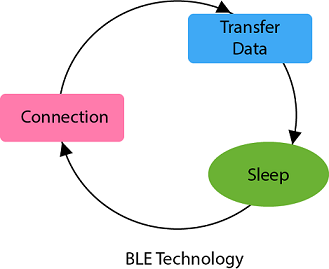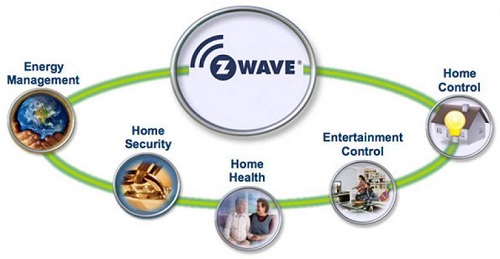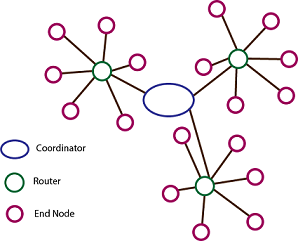IoT Data Link Communication ProtocolThe IoT Data Link communication protocol provides service to the Network Layer. There are various protocols and standard technologies specified by the different organization for data link protocols. BluetoothBluetooth is a short-range wireless communication network over a radio frequency. Bluetooth is mostly integrated into smartphones and mobile devices. The Bluetooth communication network works within 2.4 ISM band frequencies with data rate up to 3Mbps. There are three categories of Bluetooth technology:
The features of Bluetooth 5.0 version is introduced as Bluetooth 5 which have been developed entirely for the Internet of Things. Properties of Bluetooth network
Advantages of Bluetooth network
Disadvantages of Bluetooth network
Bluetooth Low EnergyBluetooth low energy (BLE) is a short-range communication network protocol with PHY (physical layer) and MAC (Medium Access Control) layer. It is designed for low-power devices which uses less data. BLE always remain in sleep mode except when the connection between devices is initiated and data transmission occurs, due to this it conserves power of the device. Bluetooth low energy follows the master/slave architecture and offers two types of frames that are adverting and data frames. Slave node sent the advertising frame to discover one or more dedicated advertisement channels. Master nodes sense this advertisement channels to find slaves and connect them. 
Z-WaveZ-Wave is a wireless communication protocol with the frequency of 900MHz. The ranges of Z-Wave lies between 30 meters to 100 meters with the data transfer rate of 100kbps so that it is suitable for small messages in IoT applications for home automation. This communication protocol operates on mesh network architecture with one and several secondary controllers. 
Properties of Z-Wave protocol
Advantages of Z-Wave protocol
Application of Z-Wave protocol
ZigBee Smart EnergyZigBee is a low power, low data rate wireless personal area network communication protocol. It is mostly used in home automation and industrial settings. Since ZigBee is a low power communication protocol, the IoT power devices used with ZigBee technology. The ZigBee communication protocol is based on the IEEE 802.15.4 standard operating at the 2.4GHz frequency. The ZigBee protocol supports star, cluster or wireless mesh technology topology. ZigBee uses the following devices in its network:

Properties of ZigBee protocol
Advantages of ZigBee protocol
Disadvantages of ZigBee protocol
Application of ZigBee protocol
LoRaWANLoRaWAN refers to Long Rage Wide Area Network which is a wide area network protocol. It is an optimized low-power consumption protocol design to support large-scale public networks with millions of low-power devices. A single operator operates the LoRaWAN. The LoRaWAN network is a bi-directional communication for IoT application with low cost, mobility, and security. Properties of LoRaWAN protocol
Next TopicNetwork Layer Protocols
|
 For Videos Join Our Youtube Channel: Join Now
For Videos Join Our Youtube Channel: Join Now
Feedback
- Send your Feedback to [email protected]
Help Others, Please Share










